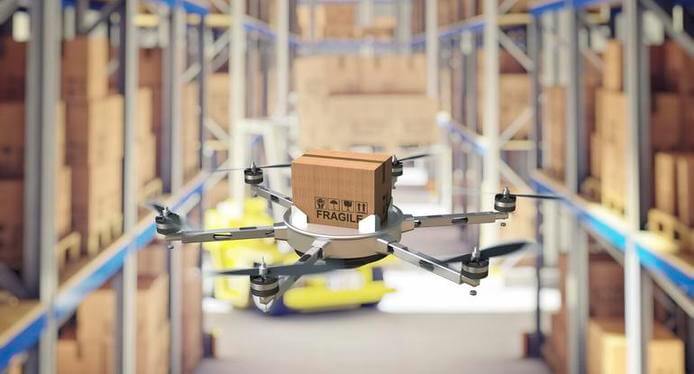The UK retail sector employs 3.1 million people, accounting for over 14% of those employed in the UK. It is also one of five sectors identified by the HM Treasury report “Fixing the Foundations” for being the cause for 65% of the productivity shortfall, despite the five sectors accounting for just 40% of the economy. This figure suggests productivity improvement in the retail sector should be a key focus in order to support UK economy growth – could automation and the introduction of robots be the answer to the great productivity puzzle?
Will robots take our jobs?
Deloitte have recently suggested that the wholesale and retail sector could experience the largest number of job losses due to automation, with robots already able to conduct certain tasks such as shelf replenishment and inventory analysis. Take Walmart for example: they are currently testing drones to conduct a variety of tasks including home deliveries from trailer to door and inventory checking within warehouses and trailers; perhaps those high, supermarket shelves could be targeted next? In fact, there is already a Segway driven robot capable of analysing inventory, highlighting replenishment errors as well as reviewing price information. The technological advancements we are currently witnessing could bring a vast change to the world as we know it, and it may not be too far away.
Fear mongering or a realistic projection?
In 2013, Carl Frey and Michael Osbourne of Oxford University conducted a study which established that “47% of Americans work in jobs that will be highly susceptible to automation over the next two decades” – that is an astonishing 155 million workers. Arntz, Gregory and Zierahn of the Centre for European Economic Research conducted a comparative study to that of Frey & Osbourne, highlighting the complexities of job roles and assessing suitability for role automation. They quickly established that most roles are particularly complex, consisting of a bundle of tasks which may be difficult for completion by robot alone. The likelihood of automation across all employment sectors, Arntz, Gregory and Zierhan suggest, could be closer to 9% through applying a task based methodology rather than occupation based as within the earlier study.
As more retailers are adopting more customer centric strategies in order to win crucial business from their rivals, can they afford to remove the human element from the customer journey?
Should retail employees be concerned?
Deloitte (2015) conducted a study into the history of automation, suggesting that the impact upon the UK workforce was largely felt by those conducting manual, laborious work, which was traditionally completed by men. Technology can also be seen as a saviour to retailers, reducing the cost to the consumer, therefore allowing an increase in consumer spending and creating new roles. For example, upon the introduction of self-scan checkouts in supermarkets, new roles were created due to the expansion of the online grocery market; labour is often reinvested into growing areas of the business, increasing productivity and offering an improved service to customers.
Can a robot be empathetic?
The complication faced by automation in retail is the number of customer facing activities conducted by retail teams. As more retailers are adopting more customer centric strategies in order to win crucial business from their rivals, can they afford to remove the human element from the customer journey?
Ethics and values offer a point of difference to retailers, and can often be the deciding factor in customer loyalty. Robots may play a part in increasing productivity in retail, though perhaps as human augmentation rather than as a substitution; one thing is for sure – automation will continue to be a hot topic amongst retailers.
What we know for sure at SWL… Is that every retailer is unique and adaptable to change with requirement to become smarter and remain competitive in an increasingly challenging market. At SWL, we firstly seek to understand you, your customer and your current productivity health before suggesting how you can improve the efficiency of the interactions between people, process and systems.
Get in touch with us to find out more.

